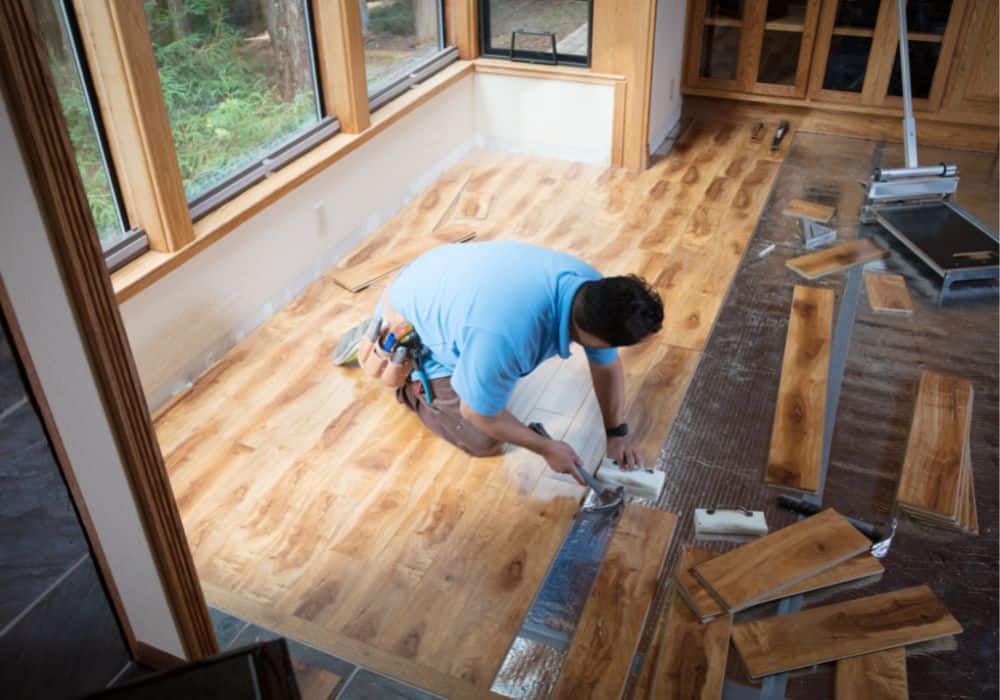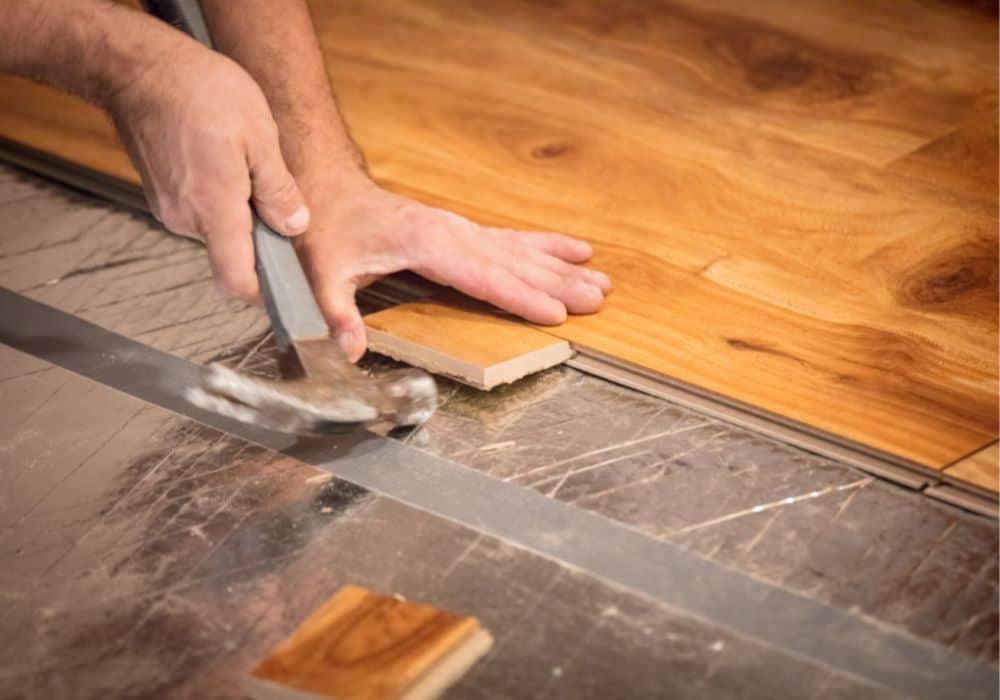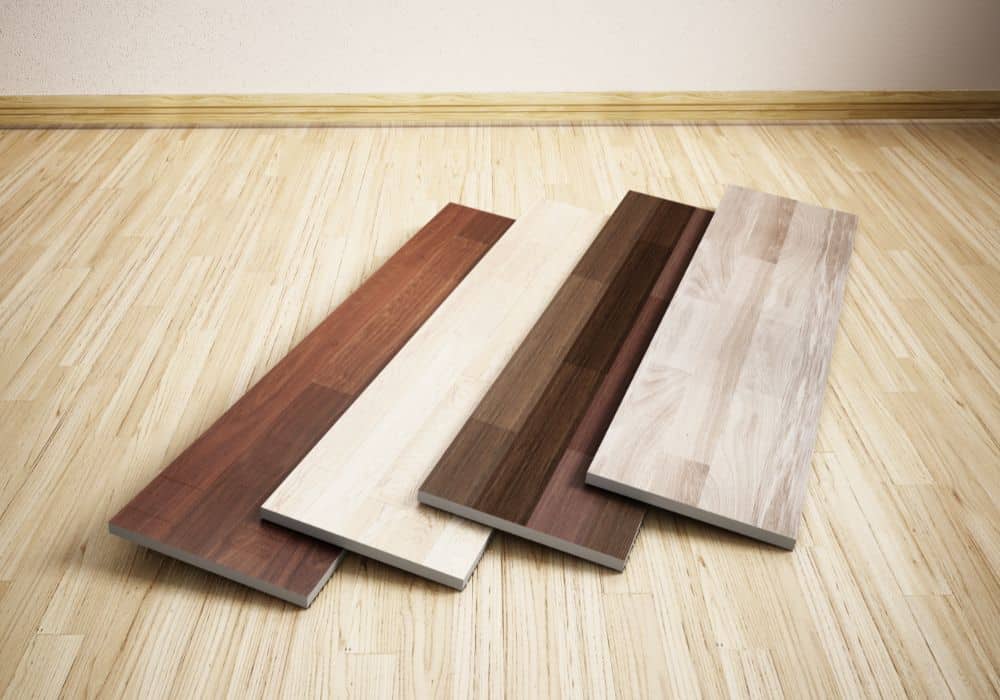Are you considering putting wood floors over the tiles in your home or office? Tiles have their beauty and use, but they also have their downsides. Besides, wood flooring can change the look and feel of any space, giving it a sophisticated look.
However, can you put wood floors over tiles on the existing floor, or do you need to remove the tiles before that? Understanding the process of placing wood flooring over tiles is crucial if you want the best results. Some difficulties may arise in the process.
Being aware of what is involved keeps you ready and helps you to make an informed decision. So, this article explains whether you can put wood floors over tiles, advantages, and issues. You can decide if it fits your style at the end of the day.
Table of Contents
What Is Wood Flooring?
Wood flooring is using wood as the material for the floors in any house. Hardwood flooring makes the best wood flooring material, so you will find wood types, such as oak, cherry, birch, and maple used as floors.
This type of flooring comes in various textures, styles, and colors. Some are dark, while others are reddish-brown or light brown. You can install wood floors in different ways, such as using strips, wood tiles, floorboards, or planks.
What Is Tile Flooring?
While you will find some wood floors in the form of tiles, the two flooring types are worlds apart. Tile flooring is typically stone, porcelain, or of ceramic tile. It is available in a variety of options, including style and color. And it is resistant to water, making it last longer.
Tile flooring is a favorite for bathrooms and kitchens because of the look and feels it provides. You can install them using different methods, including grout and adhesive. Not all tile flooring is slippery; some have traction to reduce the chances of slipping.
Can You Put Wood Floors Over Tile?
It is possible to put wood floors over an existing tile floor, even if you do not first remove the tiles. But while this is doable, some difficulties may arise during installation. If you get it right, you will have an excellent finish to your home’s flooring.
Otherwise, it may look shabby or unsophisticated. You may be tempted to do the job yourself, but it is best to use the services of a professional installer for the best results.
Potential Difficulties When Installing Wood Floors Over Tiles
Several difficulties or hazards may occur with installing wood flooring over tiles. Let’s look at a few of them:
1. Trip Hazard
Installing wood floors over tiles can change the look of any space. But one hazard or difficulty is the height difference. Adding wood over tiles increases the height of the floor and may become a tripping hazard. It does not matter how thin or flat the wood or tiles are; there is always that risk, depending on who installs them.
2. Poor Leveling
Also, there is the danger of the tile not being level. If that is the case, the wood floors will not lie flat over the tiles, making the job look messy.
3. Adhesion Issues
Additionally, installing the wood floors over the tiles may cause the tiles to become messy. This may happen as you try to get the adhesive bond to adhere to the tiles, so the wood can stick.
4. Loose Tiles
And if the tiles are already loose on the floor, putting new wood floors over them will only create problems instead of solving them. The same applies if the tile is cracked or damaged in some other way.
Perks of Putting Wood Floors Over Tiles
You will find that there are several advantages of putting wood flooring over tiles.
1. Easy Maintenance
It is easier to maintain wood than it is to maintain tiles. Wooden floors, such as solid hardwood floors, do not require regular cleaning, while tiles do. You must always keep an eye on the floors and clean any obvious mess with tiles. Wood, on the other hand, may only require polishing from time to time.
2. Soundproofing
Wood floors provide better soundproofing than tiling. When tiles come loose, walking over them creates noise as the tiles move and rub against each other. Wood can creak, but that is only when it becomes old.
3. Better Insulation
Wood flooring provides better insulation because it retains heat. Since it traps heat, you do not require as much energy to provide heating in cold weather. The same is not true about tiles, as they typically get cold because they are not good insulators.
4. Improved Value
Adding wood floors to your home can increase its value. This is true even if you add the floors over tiles. People tend to value wood flooring because of the sophistication it adds to any house.
5. Easier Installation
It is easier to install wood flooring over tiles than it is to install tiles. Wood is more malleable than tiles, so you can easily install it in corners and at odd angles. In addition, you do not need as many materials to install wood floors as you do with tiles.
6. Increased Durability
Wood does not crack or chip like tile does. That is why wood floors are more popular and accepted tiling on floors. While moisture is more likely to damage wood than tiles, you are not at risk of slipping with water spillage on wood, although it can cause water damage.
Installing Wood Floors Over Tiles
You must ensure the floor is level before installation, so check the flatness with a level or straight edge. If there are uneven parts, use a concrete grinder to create a level floor. You may damage the tiles or do a messy job if you do not handle the issue of uneven floors.
Ensure you clean the surface before putting the adhesive. Use mild soap or grout line cleaner to remove dirt and debris. Dirt and dust can keep the glue or adhesive from working, so ensure it is as clean as possible. Afterward, you can put the wood over the tiles.
Use a self-leveling compound on the surface of the tile to make the surface smooth and fill cracks in the tiles. Add a moisture barrier to keep water from seeping through the subfloor and damaging the wood over time if there is a high moisture content in the area.
Conclusion
It is possible and easy to put wood floors over tiles, but you must consider the perks and pitfalls before investing in such a project. Doing this will help you determine whether or not you want to go ahead with it. It will also help you make an informed decision.


